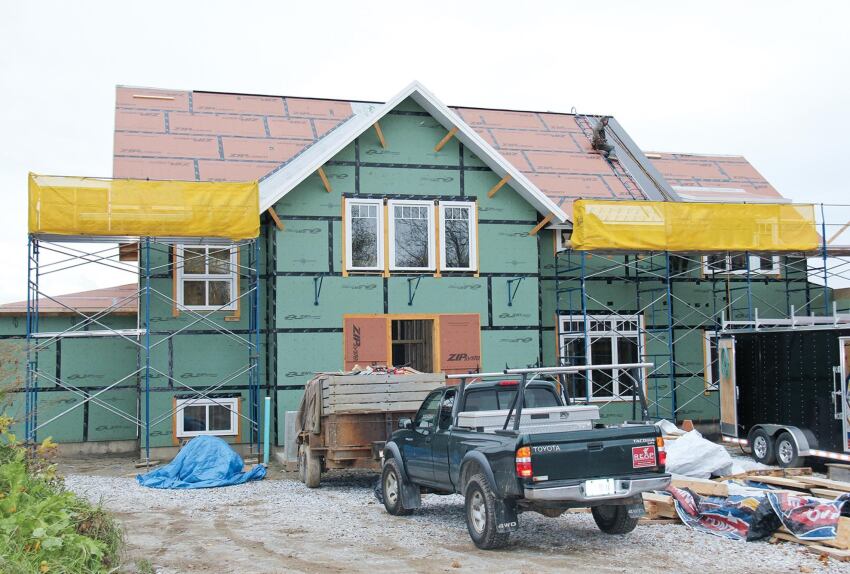

The full body harness (superanchor.com) has multiple D-rings, integral tool bags, and a hammer holder, and comes in different sizes. Here it’s connected to Super Anchor’s X-Line, which combines a 50-foot safety line with a pneumatic air hose.


The harness included with the Compliance-in-a-Can kit offers fewer features but is also OSHA-compliant.


Anchors need to be strong enough to support 5,000-pound loads, so they must be securely fastened to framing.


A rope grab is needed to match the length of the safety line to job-site conditions. The mechanical rope grab in this top photo must be manually operated.


A nonmechanical Prusik knot rope grab, an attachment familiar to climbers, tightens its grip only when the line is tensioned.


A self-retracting lifeline eliminates the need for a rope grab but tends to tug on the harness, making it most suitable for work done very near the anchor point.


Roof jacks fitted with integral guardrails can be used instead of safety harnesses in certain situations, such as for flashing and repair work.


Harnesses may not be needed when there is fully planked staging up to the eaves of a house with guardrails installed as shown. But workers on the cross-gable still need fall protection, because they would be within 6 feet of an unguarded roof edge.
